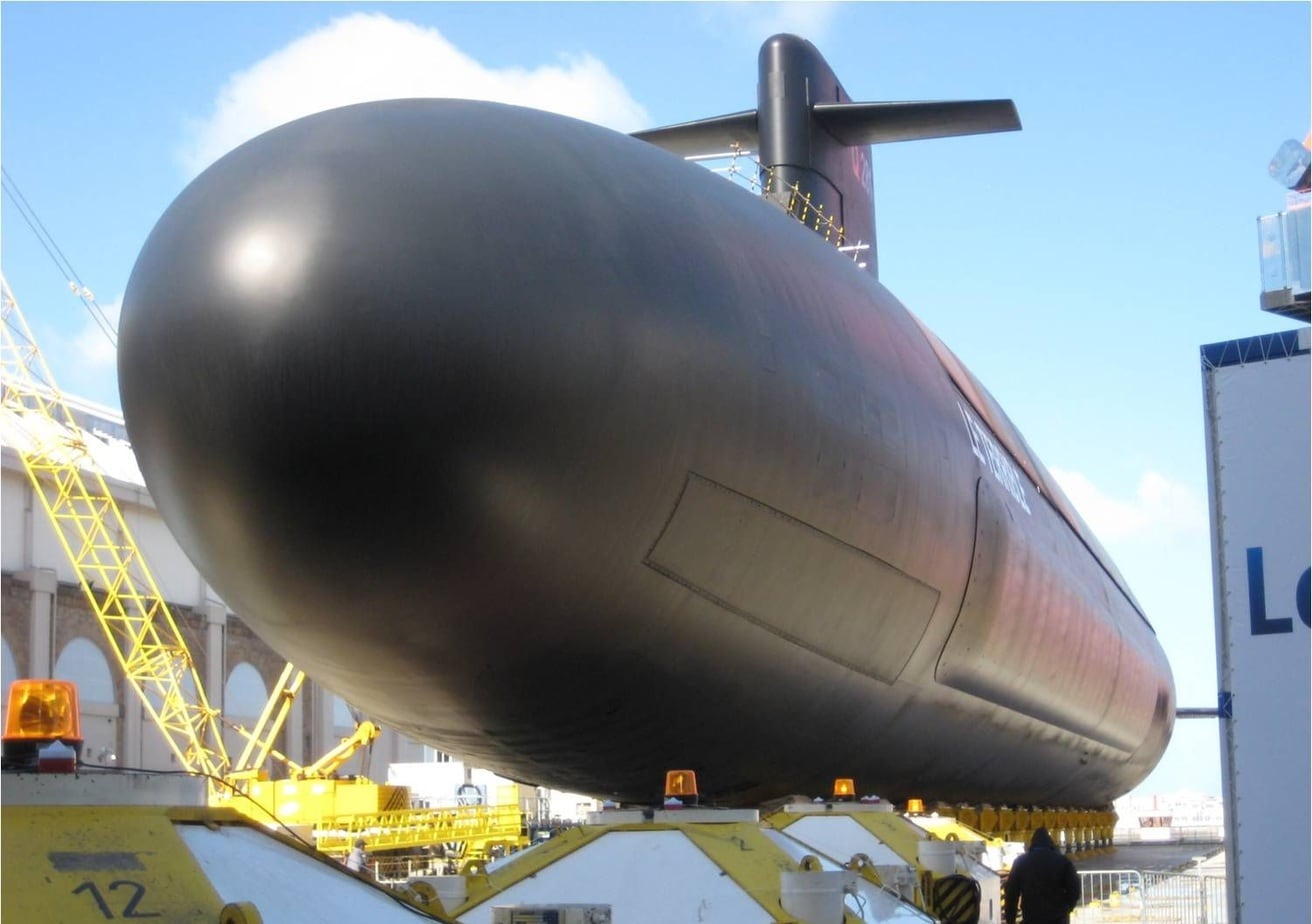France currently possesses one of the most formidable military forces in Europe. It boasts a large ground army, a formidable air force, and a decent navy. France’s strategic submarine force, known as the Force Océanique Stratégique (FOST), plays a crucial role in the country’s national defense strategy.
The fleet of nuclear-powered ballistic missile submarines (SSBNs) ensures France’s second-strike capability, a cornerstone of its nuclear deterrence policy. This article delves into the composition, capabilities, and future developments of France’s SSBN fleet.
France’s Current SSBN Fleet
As of 2025, France operates four Le Triomphant-class SSBNs. These submarines are: Le Triomphant (S616), Le Téméraire (S617), Le Vigilant (S618), and Le Terrible (S619). Each of these submarines is equipped with 16 missile silos capable of launching the M51 submarine-launched ballistic missile (SLBM).
The M51 missile, with its multiple independently targetable reentry vehicle (MIRV) capability, can carry up to ten warheads, providing a robust deterrent against potential adversaries.
Capabilities and Technological Advancements
The Triomphant-class submarines are equipped with advanced acoustic reduction technologies, making them extremely difficult to detect. This includes specialized hull coatings and noise-dampening systems that minimize the sound produced by the submarine. The hull is constructed using HLES 100 steel, which provides strength and durability while contributing to the submarine’s stealth capabilities. These submarines can dive to depths exceeding 400 meters (1,300 feet) and have an endurance of over 60 days submerged, allowing them to remain hidden and operational for extended periods.
The propulsion system is powered by a K15 pressurized water reactor, which generates 150 MWth. This nuclear turbo-electric system provides the submarine with unlimited range and the ability to stay submerged for long durations. The Triomphant-class SSBNs can achieve speeds of over 25 knots (46 km/h) while submerged, ensuring rapid maneuverability and the ability to evade detection.
Each Triomphant-class submarine is equipped with 16 missile silos capable of launching the M51 SLBM. The M51 missile has a range of up to 8,000 km and can carry multiple independently targetable reentry vehicles (MIRVs), each with a thermonuclear warhead. In addition to ballistic missiles, these submarines are armed with four 533 mm torpedo tubes that can launch F17 torpedoes and Exocet SM39 anti-ship missiles. This provides the SSBNs with a robust defense against surface and underwater threats.
The Triomphant-class SSBNs are equipped with advanced sonar systems, including the DMUX 80 bow and flank array sonar and the DUUX 5 sonar. These systems enhance the submarine’s ability to detect other vessels and underwater obstacles. The submarines feature electronic support measures (ESM) such as the Thales DR 3000U system, which helps in identifying and countering enemy radar and communication signals. The submarines are equipped with sophisticated communication systems that allow them to maintain contact with French command authorities even while submerged. This ensures they can receive orders and respond to strategic situations promptly.
Always at the Ready
France’s SSBNs operate under a strict doctrine of deterrence. The principle of “strict sufficiency” guides the French nuclear strategy, meaning that the size and capability of the nuclear arsenal are maintained at the minimum level necessary to ensure credible deterrence. This doctrine emphasizes the importance of survivability and second-strike capability.
The SSBNs follow unpredictable patrol routes in the Atlantic Ocean, making it difficult for potential adversaries to track them. This unpredictability is a key element of their deterrence strategy, as it ensures that a retaliatory strike can be launched even if France’s land-based nuclear forces are compromised.
The crews of these submarines undergo rigorous training to ensure they are prepared for the demanding conditions of extended patrols. Each SSBN is operated by two alternating crews (Blue and Red), allowing for continuous operations without overburdening the personnel.
The SNLE-3G Program
Looking ahead, France is developing a new class of SSBNs, known as the SNLE-3G (Sous-marin Nucléaire Lanceur d’Engins de 3ème Génération). This next-generation SSBN program aims to replace the Le Triomphant-class submarines, ensuring the continuity of France’s sea-based nuclear deterrent into the latter half of the 21st century.
The SNLE-3G submarines will incorporate the latest advancements in stealth, survivability, and weaponry. They are expected to be larger than their predecessors, with enhanced acoustic quieting technologies and improved propulsion systems. The SNLE-3G will also be equipped with the next-generation M51.4 SLBM, which will offer further improvements in range and accuracy.
The construction of the first SNLE-3G submarine began in 2024, with the steel-cutting ceremony marking a significant milestone in the program. The first submarine is expected to enter service in the early 2030s, with the entire class operational by the mid-2040s.
The introduction of the SNLE-3G submarines will ensure that France maintains a credible and effective nuclear deterrent well into the future. These submarines will be a critical component of France’s defense strategy, providing a secure and survivable second-strike capability.
France’s SSBN fleet is a vital element of its national defense strategy, providing a credible and effective nuclear deterrent. The Le Triomphant-class submarines, with their advanced stealth and survivability features, ensure that France can maintain a continuous at-sea deterrent posture. Looking to the future, the development of the SNLE-3G submarines will further enhance France’s strategic capabilities, ensuring the continuity of its nuclear deterrence well into the 21st century.
The strategic importance of these submarines cannot be overstated. They represent the ultimate insurance policy against existential threats, ensuring that France can respond to any nuclear aggression with overwhelming force. As such, the continued investment in and development of France’s SSBN fleet is essential for maintaining national security and preserving global stability.
About the Author: Isaac Seitz
Isaac Seitz, a 19FortyFive Defense Columnist, graduated from Patrick Henry College’s Strategic Intelligence and National Security program. He has also studied Russian at Middlebury Language Schools and has worked as an intelligence Analyst in the private sector.

